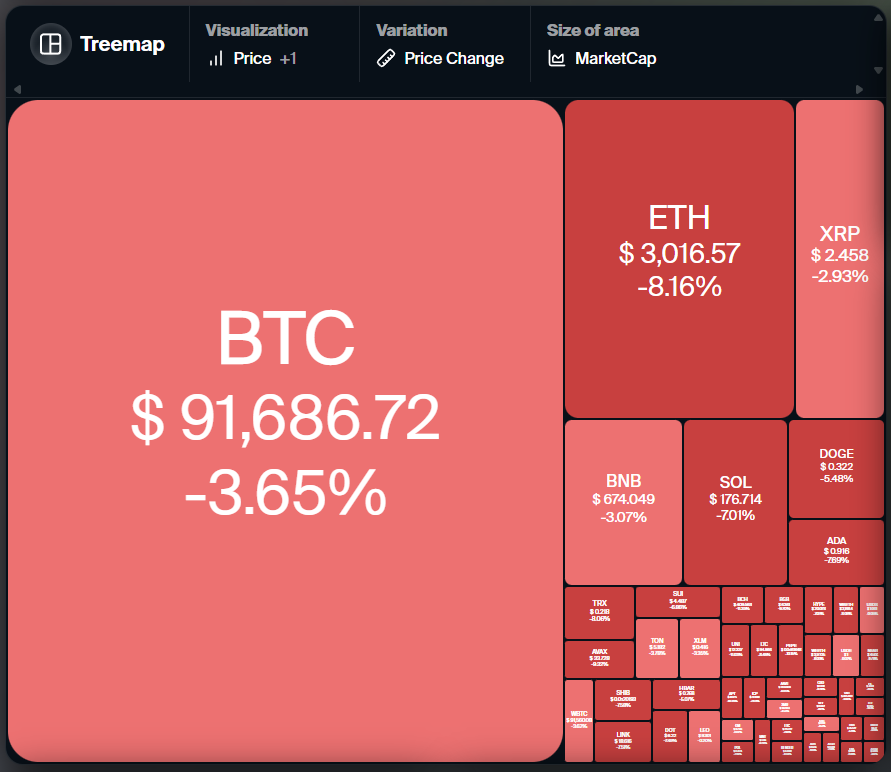SINGAPORE: Asian stocks made their biggest gains in a month on Thursday, while the dollar took a breather and bond markets steadied as investors stepped back to assess the interest rate outlook.
Oil found support following its sharpest fall in two-and-a-half months on demand worries and the lack, so far, of an obvious Israeli or U.S. response to Iran’s weekend attack on Israel.
Analysts do not expect dramatic new sanctions on oil from Iran, which comprises about 3% of global output.
MSCI’s broadest index of Asia-Pacific shares outside Japan rose 1% led by a 2% gain in South Korea’s Kospi and a 1% rise for Hong Kong’s Hang Seng. All of those indexes are down for the week and for the month so far.
Japan’s Nikkei rose 0.3%, though its drop of 3.6% for the week has it eyeing its biggest weekly fall since 2022.
S&P 500 futures bounced 0.4%, Nasdaq 100 futures rose 0.5%, FTSE futures rose 0.3% while European futures were flat.
The dollar has eased from recent highs and news of an unusual trilateral agreement between the U.S., Japan and Korea to consult closely on foreign exchange left the door open to intervention to slow any further dollar gains in Asia.
U.S. short-term interest rate expectations were little changed but selling of longer-dated bonds abated, and Asia’s bond markets rallied on Thursday. Ten-year Japanese government bond yields fell 2 basis points to 0.86%.
Ten-year Treasury yields fell 1.6 bps to 4.569% and two-year Treasury yields, which touched 5% on Thursday, were last at 4.92%.
“I believe (falls in yields and the dollar) are small pullbacks from extended moves,” said Anshul Sidher, global head of markets at ANZ in Singapore, adding traders are closely watching bonds and the dollar to drive the mood.
“I’d expect (oil) to be range bound subject to (Middle East) escalations from where we are now,” he said.
Taiwanese chipmaker TSMC turned in a positive surprise, beating market estimates with a 9% rise in profit as it rides a wave of artificial-intelligence led demand. It expects business to pick up in the second half and the result contrasted with Wednesday’s disappointing earnings from chipmaking supplier ASML.
DOLLAR PAUSE
Nervousness in the equity markets has followed a wave of bond selling and dollar buying as sticky U.S. inflation and a shift in tone at the Federal Reserve pointed to persistently high U.S. rates. The rates-sensitive Nasdaq is down 3% so far this week.
The euro is under pressure as European policymakers are readying to cut rates in two months time, though at $1.0680 it is off this week’s five-month lows.
The Australian dollar took a slight knock from data showing an unexpected fall in Australian employment in March before steadying around $0.6446.
The yen traded at 154.32 per dollar, close to a three-decade low, and traders are eyeing a breach of 155 as a possible trigger for intervention.
“China is likely to welcome an end to yen depreciation,” said Bank of Singapore strategist Moh Siong Sim in a note to clients.
“We believe the issue of whether Japan will intervene to limit yen weakness will matter to the People’s Bank of China’s assessment of the appropriate level to stabilise the (yuan).”
China’s yuan hovered at 7.2357 per dollar. It is down 1.8% against the dollar this year and the weakening of its trading band this week has been taken as a signal that Chinese authorities will tolerate further softness.
In other commodity markets, European gas prices have retreated from three-month highs and sharp rallies in metal prices have paused, though not reversed.
Three-month London copper is up 12% this year and traded at $9,584 per tonne overnight. Singapore iron ore held gains at just over $110 a tonne.
Gold is just below last week’s record high at $2,376 an ounce.
A handful of U.S. and European central bankers speak later on Thursday. U.S. jobless claims data is due and earnings at Blackstone and Netflix will be closely watched. – Reuters
